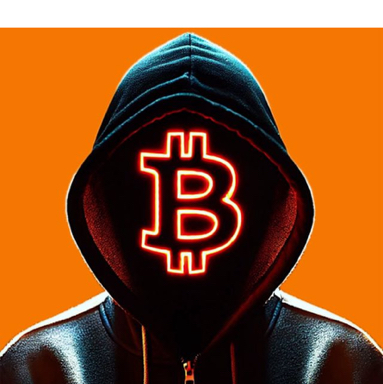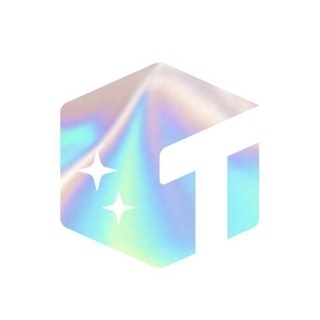Bitget:全球日交易量排名前 4!
BTC 市占率60.93%
Bitget 新幣上架:Pi Network
山寨季指數:0(比特幣季)
BTC/USDT$83965.42 (+3.50%)恐懼與貪婪指數27(恐懼)
比特幣現貨 ETF 總淨流量:-$135.2M(1 天);-$1.29B(7 天)。盤前交易幣種PAWS,WCTBitget 新用戶立享 6,200 USDT 歡迎禮包!立即領取
到 Bitget App 隨時隨地輕鬆交易!立即下載
Bitget:全球日交易量排名前 4!
BTC 市占率60.93%
Bitget 新幣上架:Pi Network
山寨季指數:0(比特幣季)
BTC/USDT$83965.42 (+3.50%)恐懼與貪婪指數27(恐懼)
比特幣現貨 ETF 總淨流量:-$135.2M(1 天);-$1.29B(7 天)。盤前交易幣種PAWS,WCTBitget 新用戶立享 6,200 USDT 歡迎禮包!立即領取
到 Bitget App 隨時隨地輕鬆交易!立即下載
Bitget:全球日交易量排名前 4!
BTC 市占率60.93%
Bitget 新幣上架:Pi Network
山寨季指數:0(比特幣季)
BTC/USDT$83965.42 (+3.50%)恐懼與貪婪指數27(恐懼)
比特幣現貨 ETF 總淨流量:-$135.2M(1 天);-$1.29B(7 天)。盤前交易幣種PAWS,WCTBitget 新用戶立享 6,200 USDT 歡迎禮包!立即領取
到 Bitget App 隨時隨地輕鬆交易!立即下載


UniFi Protocol 價格UP
未上架
報價幣種:
USD
數據來源於第三方提供商。本頁面和提供的資訊不為任何特定的加密貨幣提供背書。想要交易已上架幣種? 點擊此處
$0.01000+11.07%1D
價格走勢圖
最近更新時間 2025-03-14 23:57:54(UTC+0)
市值:--
完全稀釋市值:--
24 小時交易額:$174,334.56
24 小時交易額/市值:0.00%
24 小時最高價:$0.01692
24 小時最低價:$0.005005
歷史最高價:$4.87
歷史最低價:$0.005005
流通量:-- UP
總發行量:
1,272,342UP
流通率:0.00%
最大發行量:
--UP
以 BTC 計價:0.{6}1190 BTC
以 ETH 計價:0.{5}5227 ETH
以 BTC 市值計價:
--
以 ETH 市值計價:
--
合約:--
您今天對 UniFi Protocol 感覺如何?
注意:此資訊僅供參考。
UniFi Protocol 今日價格
UniFi Protocol 的即時價格是今天每 (UP / USD) $0.01000,目前市值為 $0.00 USD。24 小時交易量為 $174,334.56 USD。UP 至 USD 的價格為即時更新。UniFi Protocol 在過去 24 小時內的變化為 11.07%。其流通供應量為 0 。
UP 的最高價格是多少?
UP 的歷史最高價(ATH)為 $4.87,於 2021-05-09 錄得。
UP 的最低價格是多少?
UP 的歷史最低價(ATL)為 $0.005005,於 2025-03-14 錄得。
UniFi Protocol 價格預測
UP 在 2026 的價格是多少?
根據 UP 的歷史價格表現預測模型,預計 UP 的價格將在 2026 達到 $0.01018。
UP 在 2031 的價格是多少?
2031,UP 的價格預計將上漲 +27.00%。 到 2031 底,預計 UP 的價格將達到 $0.02625,累計投資報酬率為 +191.54%。
UniFi Protocol 價格歷史(USD)
過去一年,UniFi Protocol 價格上漲了 -98.44%。在此期間, 兌 USD 的最高價格為 $1.48, 兌 USD 的最低價格為 $0.005005。
時間漲跌幅(%) 最低價
最低價 最高價
最高價 
 最低價
最低價 最高價
最高價 
24h+11.07%$0.005005$0.01692
7d-36.50%$0.005035$0.01944
30d-9.33%$0.005005$0.02650
90d-77.47%$0.005005$0.08146
1y-98.44%$0.005005$1.48
全部時間-97.38%$0.005005(2025-03-14, 今天 )$4.87(2021-05-09, 3 年前 )
UniFi Protocol 市場資訊
UniFi Protocol 持幣分布集中度
巨鯨
投資者
散戶
UniFi Protocol 地址持有時長分布
長期持幣者
游資
交易者
coinInfo.name(12)即時價格表

UniFi Protocol 評級
社群的平均評分
4.6
此內容僅供參考。
UniFi Protocol (UP) 簡介
繁体中文:
加密货币已成为金融行业中的一项重要创新。其中,UniFi Protocol是一种备受关注的加密货币。UniFi Protocol是一个去中心化的金融解决方案,旨在为用户提供跨链流动性和借贷服务。该协议的主要目标是建立一个可互通的金融生态系统,使用户能够在不同的区块链网络之间进行资产交换和贷款。
UniFi Protocol的一个关键特点是跨链流动性。传统的加密货币交易所通常只支持一个区块链网络上的交易,而UniFi Protocol则允许用户在不同的区块链网络之间进行资产的无缝流动。这意味着用户可以在不同的区块链网络之间进行资产交换,而不用依赖于中心化的交易所。
借贷是UniFi Protocol的另一个重要功能。借贷允许用户将其加密资产作为抵押品,并从平台上借出其他数字资产。这给用户提供了获取流动性的途径,同时也提供了获得额外收益的机会。借贷功能对于需要短期资金或希望通过资产运作获得利润的个人和企业而言尤为有用。
UniFi Protocol通过其去中心化的生态系统和智能合约实现了高度的安全性和透明度。智能合约确保了交易的执行和资产的安全性,从而减少了潜在的操纵和风险。此外,由于UniFi Protocol是去中心化的,用户不需要信任第三方来处理他们的资金。
随着加密货币市场的不断发展,UniFi Protocol提供了一个创新的解决方案,为用户提供了跨链流动性和借贷服务。无论是推动跨链交易,还是为用户提供流动性和收益机会,UniFi Protocol都在推动加密货币市场的进步。
UP 兌換當地法幣匯率表
1 UP 兌換 MXN$0.21 UP 兌換 GTQQ0.081 UP 兌換 CLP$9.311 UP 兌換 HNLL0.261 UP 兌換 UGXSh36.641 UP 兌換 ZARR0.181 UP 兌換 TNDد.ت0.031 UP 兌換 IQDع.د13.091 UP 兌換 TWDNT$0.331 UP 兌換 RSDдин.1.081 UP 兌換 DOP$0.631 UP 兌換 MYRRM0.041 UP 兌換 GEL₾0.031 UP 兌換 UYU$0.431 UP 兌換 MADد.م.0.11 UP 兌換 OMRر.ع.01 UP 兌換 AZN₼0.021 UP 兌換 KESSh1.291 UP 兌換 SEKkr0.11 UP 兌換 UAH₴0.41
- 1
- 2
- 3
- 4
- 5
最近更新時間 2025-03-14 23:57:54(UTC+0)
UniFi Protocol 動態

填補FTX的空白,CoinUp.io要做不止於FTX的衍生性金融
CoinUp.io的衍生性商品交易平台提供多樣化的策略選擇和槓桿機制,滿足資深投資者的需求。
BlockBeats•2024-09-30 10:46

TonUP 將銷毀團隊和顧問持有的 UP 代幣,佔總供應量的 13%
Bitget•2024-09-18 10:26

UP-ERC20 網路提領服務暫停公告
Bitget Announcement•2024-04-30 05:46

Bitget 關於恢復UP-TON提幣的公告
Bitget Announcement•2024-04-01 09:22
購買其他幣種
用戶還在查詢 UniFi Protocol 的價格。
UniFi Protocol 的目前價格是多少?
UniFi Protocol 的即時價格為 $0.01(UP/USD),目前市值為 $0 USD。由於加密貨幣市場全天候不間斷交易,UniFi Protocol 的價格經常波動。您可以在 Bitget 上查看 UniFi Protocol 的市場價格及其歷史數據。
UniFi Protocol 的 24 小時交易量是多少?
在最近 24 小時內,UniFi Protocol 的交易量為 $174,334.56。
UniFi Protocol 的歷史最高價是多少?
UniFi Protocol 的歷史最高價是 $4.87。這個歷史最高價是 UniFi Protocol 自推出以來的最高價。
我可以在 Bitget 上購買 UniFi Protocol 嗎?
可以,UniFi Protocol 目前在 Bitget 的中心化交易平台上可用。如需更詳細的說明,請查看我們很有幫助的 如何購買 指南。
我可以透過投資 UniFi Protocol 獲得穩定的收入嗎?
當然,Bitget 推出了一個 策略交易平台,其提供智能交易策略,可以自動執行您的交易,幫您賺取收益。
我在哪裡能以最低的費用購買 UniFi Protocol?
Bitget提供行業領先的交易費用和市場深度,以確保交易者能够從投資中獲利。 您可通過 Bitget 交易所交易。
在哪裡可以購買加密貨幣?
影片部分 - 快速認證、快速交易

如何在 Bitget 完成身分認證以防範詐騙
1. 登入您的 Bitget 帳戶。
2. 如果您是 Bitget 的新用戶,請觀看我們的教學,以了解如何建立帳戶。
3. 將滑鼠移到您的個人頭像上,點擊「未認證」,然後點擊「認證」。
4. 選擇您簽發的國家或地區和證件類型,然後根據指示進行操作。
5. 根據您的偏好,選擇「手機認證」或「電腦認證」。
6. 填寫您的詳細資訊,提交身分證影本,並拍攝一張自拍照。
7. 提交申請後,身分認證就完成了!
加密貨幣投資(包括透過 Bitget 線上購買 UniFi Protocol)具有市場風險。Bitget 為您提供購買 UniFi Protocol 的簡便方式,並且盡最大努力讓用戶充分了解我們在交易所提供的每種加密貨幣。但是,我們不對您購買 UniFi Protocol 可能產生的結果負責。此頁面和其包含的任何資訊均不代表對任何特定加密貨幣的背書認可,任何價格數據均採集自公開互聯網,不被視為來自Bitget的買賣要約。
UP 資料來源
Bitget 觀點

BGUSER-9PTJ6TKA
5小時前
$T2T2 come regain your loses get some banana gun it’s pumping up 🚀🚀🚀🚀
UP0.00%
T2T2+2.48%

BGUSER-TZP8DU8P
6小時前
$BMT
The cryptocurrency market has witnessed significant growth and adoption in recent years, with
$BMT
The cryptocurrency market has witnessed significant growth and adoption in recent years, with new projects and tokens emerging regularly. Amidst this growth, crypto analytics has become a crucial aspect of the industry, enabling investors, traders, and enthusiasts to make informed decisions. In this article, we'll explore the rise of $BMT, a token that's revolutionizing crypto analytics.
The Need for Advanced Crypto Analytics
The cryptocurrency market is known for its volatility, with prices fluctuating rapidly. To navigate this market, investors and traders require access to advanced analytics tools, enabling them to:
- *Track market trends*: Identify patterns and trends in the market, making informed decisions.
- *Analyze token performance*: Evaluate the performance of individual tokens, assessing their potential for growth.
- *Predict market movements*: Utilize predictive analytics to forecast market movements, staying ahead of the curve.
Introducing $BMT: The Crypto Analytics Token
$BMT is a token specifically designed to revolutionize crypto analytics. By leveraging advanced technologies, such as artificial intelligence and machine learning, $BMT provides users with:
- *Real-time market data*: Access to real-time market data, enabling users to track market trends and token performance.
- *Predictive analytics*: Utilize predictive analytics to forecast market movements, making informed decisions.
- *Personalized insights*: Receive personalized insights and recommendations, tailored to individual investment strategies.
Key Features of $BMT
$BMT boasts several key features that set it apart from other crypto analytics platforms:
- *Decentralized architecture*: $BMT operates on a decentralized architecture, ensuring data security and integrity.
- *Community-driven*: $BMT is community-driven, with users contributing to the development and improvement of the platform.
- *Token rewards*: Users are rewarded with $BMT tokens for contributing to the platform, incentivizing participation.
Use Cases for $BMT
$BMT has several use cases, including:
- *Investor research*: Investors can utilize $BMT to research and analyze tokens, making informed investment decisions.
- *Trader insights*: Traders can leverage $BMT to gain insights into market trends and token performance, optimizing their trading strategies.
- *Crypto enthusiasts*: Crypto enthusiasts can use $BMT to stay up-to-date with market news and trends, expanding their knowledge and understanding of the industry.
Conclusion
$BMT is revolutionizing crypto analytics, providing users with advanced tools and insights to navigate the complex cryptocurrency market. With its decentralized architecture, community-driven approach, and token rewards, $BMT is poised to become a leading player in the crypto analytics space.
References:
[1] $BMT. (n.d.). Whitepaper.
[2] CoinMarketCap. (n.d.). $BMT Price Chart.
[3] CryptoSlate. (n.d.). $BMT News and Updates.
BMT+19.33%
UP0.00%
BGUSER-5LHSVEM4
6小時前
$PI hold your PI.. far more people are buying it up then selling. Buy it all up and hold.. price will skyrocket.
HOLD+12.62%
PI-7.22%

CryptoNewsUpdates
6小時前
$PI Buy now
.
.
.
PI Network Token Price Prediction 15 March 2025
Follow me for more Future Predictions
As of March 14, 2025, Pi Network (PI) is trading at approximately $1.618584. Price predictions for March 15, 2025, vary among analysts:
CoinCodex anticipates a high of $2.52 and a low of $2.08 for the upcoming week, suggesting a potential increase of up to 21.19%.
Traders Union projects that PI may reach $1.9571 by the end of 2025.
CoinEdition expects PI to trade between $0.86 and $2.70 in 2025, with an average price of $1.50.
Please note that cryptocurrency markets are highly volatile, and such predictions are speculative. It's essential to conduct thorough research and consider multiple sources before making any investment decisions.
ME+1.89%
PI-7.22%

BGUSER-QZHZGCP4
6小時前
Mint ($MINT) Price Analysis: A Bearish Trend with Potential Reversal*
$MINT
Mint ($MINT) as been experiencing a strong downtrend, with the current price at $0.0182, reflecting an 11.65% drop in the last 24 hours. The price attempted to recover but faced resistance, reaching a high of $0.0219 before falling to a low of $0.0181. Despite a trading volume of 21.94 million MINT, market activity has not been sufficient to trigger a reversal.
*Technical Analysis*
From a technical perspective, MINT remains below key moving averages:
- *MA(5)*: $0.0194
- *MA(10)*: $0.0202
- *MA(20)*: $0.0211
With the price trading below these levels, the bearish trend remains intact. A potential trend reversal would require MINT to break above these moving averages with strong volume. Until then, the downtrend is likely to persist, with key support levels to watch around $0.0150 or lower if selling pressure continues.
*Short-term Outlook*
For a short-term bounce, buyers need to step in near support zones. However, without sustained bullish momentum, MINT may struggle to regain upward traction. Monitoring price action and volume at resistance levels will provide clearer insights into whether a reversal is on the horizon or if further declines are ahead.
*Long-term Outlook*
While the short-term outlook for MINT appears bearish, the long-term prospects for the cryptocurrency remain promising. As the Mint ecosystem continues to grow and develop, we may see increased adoption and use cases, driving up demand and price.
*Key Factors Influencing Performance*
Several key factors may influence the performance of MINT, including:
- *Market Trends*: Overall cryptocurrency market trends can impact MINT's performance.
- *Adoption and Use Cases*: Increased adoption and use cases can drive up demand and price.
- *Competition*: Competition from other cryptocurrencies can affect MINT's market share.
- *Regulatory Environment*: Changes in regulations can impact MINT's performance.
*Investment Risks*
Investors should be aware of the following risks:
- *High Volatility*: MINT's price is subject to significant fluctuations, making it a high-risk investment.
- *Speculative Nature*: MINT's value is influenced by market sentiment and speculation, rather than fundamental value.
- *Market Competition*: MINT faces competition from other cryptocurrencies, which could impact its adoption and price.
*Conclusion*
Mint ($MINT) is currently experiencing a strong downtrend, with the price trading below key moving averages. While the short-term outlook appears bearish, the long-term prospects for the cryptocurrency remain promising. By monitoring price action and volume at resistance levels, investors can gain clearer insights into whether a reversal is on the horizon or if further declines are ahead.
*Recommendation*
Based on our analysis, we recommend that:
- *Investors*: Consider adding MINT to their long-term investment portfolios, given its potential for growth and adoption.
- *Traders*: Monitor MINT's price movements closely, as its technical analysis suggests potential for short-term gains.
- *Developers and Entrepreneurs*: Explore the potential of MINT's ecosystem, as its innovative approach to cryptocurrency and blockchain technology makes it an attractive option for collaboration and innovation.
By following these recommendations and staying informed about market developments, investors and traders can navigate the opportunities and challenges presented by MINT and other digital assets.
*Future Outlook*
The future outlook for MINT is promising, with several factors contributing to its potential growth:
- *Increasing Adoption*: As more investors and users adopt MINT, its demand and price may increase.
- *Improving Fundamentals*: If MINT's underlying technology and use case continue to improve, it could attract more investors and users.
- *Positive Market Sentiment*: Technical analyses indicate a strong buy signal for MINT, with a fundamental grade of 82%, suggesting robust underlying value and investor confidence.
However, there are also potential risks and challenges that could impact MINT's price:
- *Market Volatility*: The cryptocurrency market is known for its volatility, and MINT's price may fluctuate rapidly.
- *Competition*: The cryptocurrency market is highly competitive, and MINT may face challenges from other digital assets.
- *Regulatory Uncertainty*: Changes in regulations could impact MINT's performance and adoption.
By understanding these factors and staying informed about market developments, investors and traders can navigate the opportunities and challenges presented by MINT and other digital assets.
UP0.00%
NEAR+1.24%
相關資產
最近新增
最近新增的加密貨幣
相近市值
在所有 Bitget 資產中,這8種資產的市值最接近 UniFi Protocol。

































